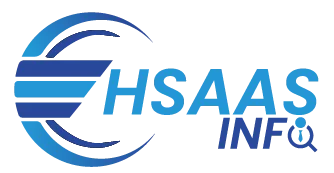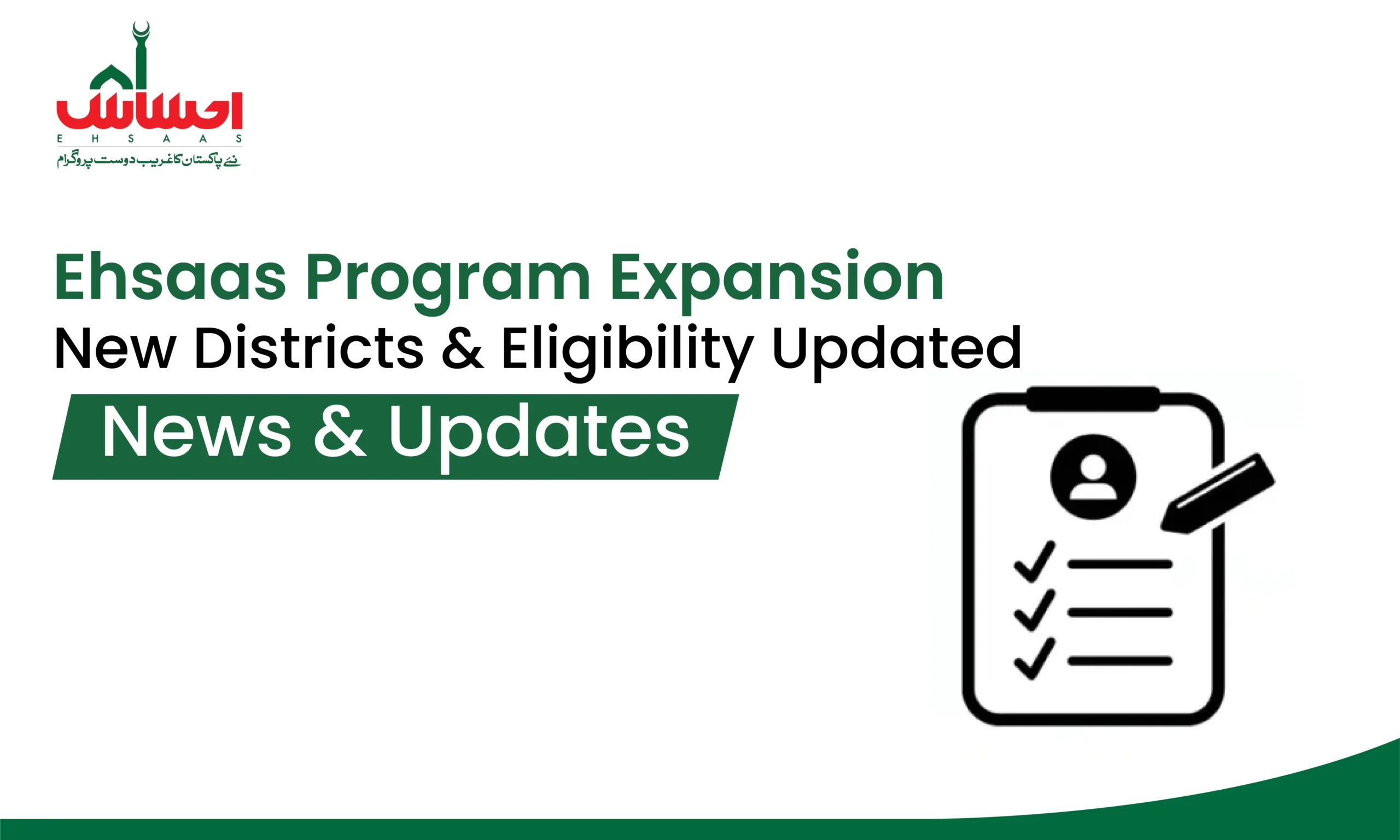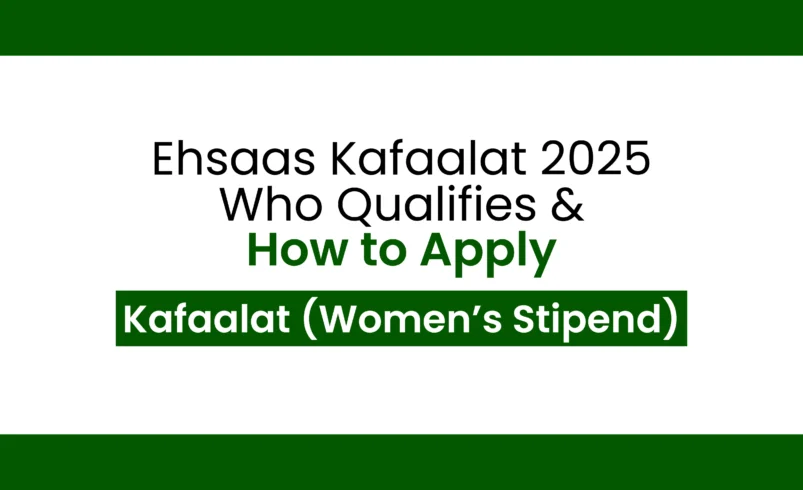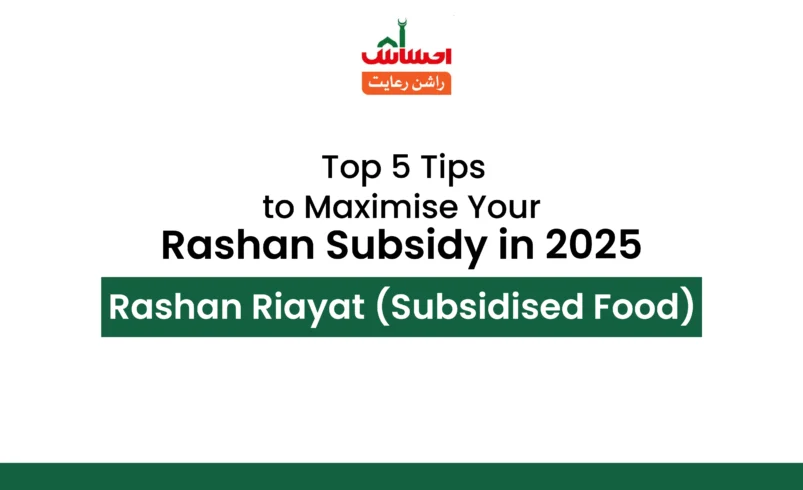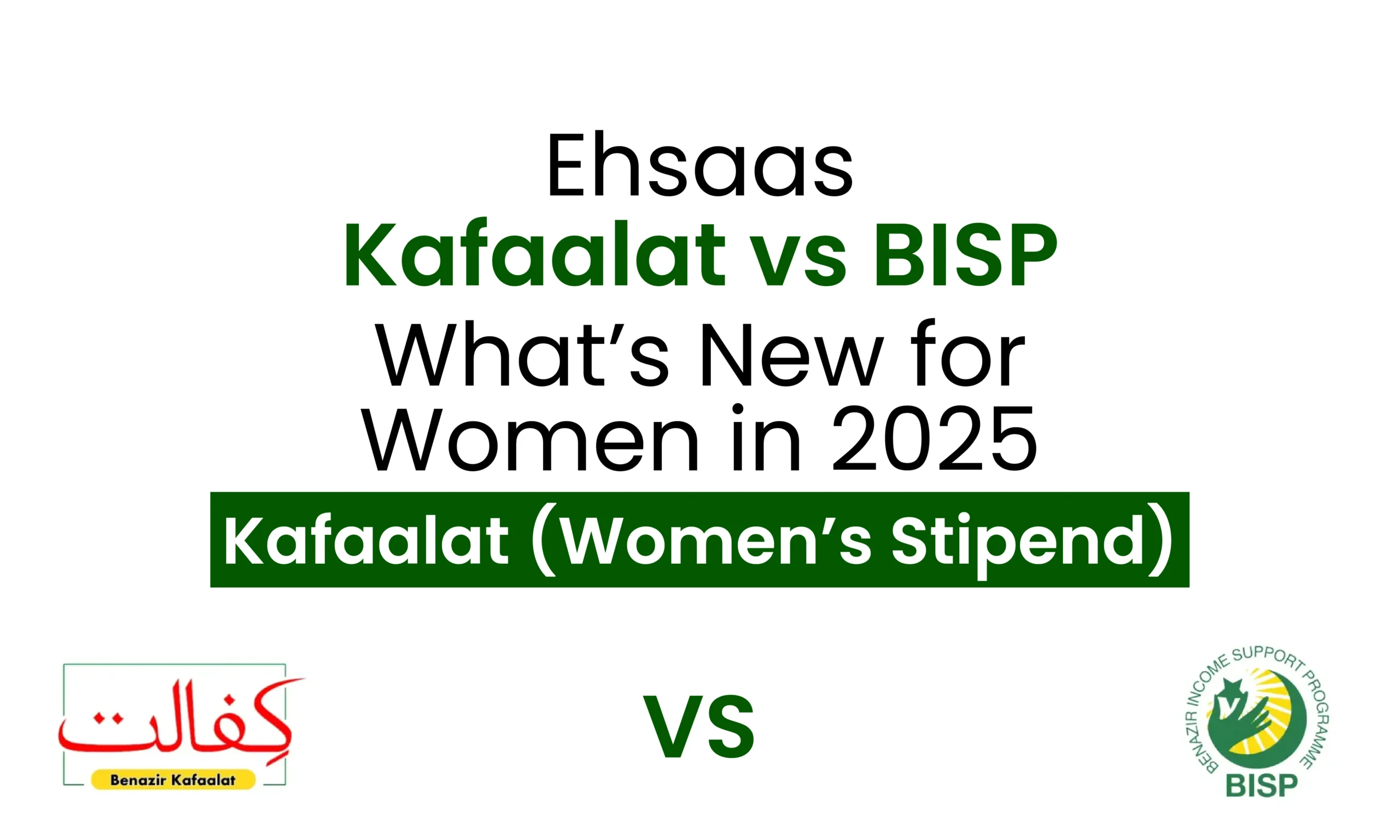The Ehsaas Kafaalat program is the most prominent social protection program in Pakistan that has been a lifeline to millions of vulnerable families in the country. This program, which is an extension of the wider Ehsaas poverty reduction strategy, has turned out to be a lifeline to families that have been facing economic difficulties.
Knowledge of the Ehsaas Kafaalat can be a life changer as far as the finances of your family are concerned. This guide will tell you all you need to know about monthly benefits, how much you will receive, crucial dates, and what you have to qualify. With this article, you will be able to see a clear pathway to how you can access and maximize these critical benefits.
The program does much more than just cash transfers; it is a systematic way to ensure that the cycle of poverty will be broken due to the targeted support and empowerment programs.
Understanding the Ehsaas Kafaalat Program
Ehsaas Kafaalat is the largest unconditional cash transfer program in Pakistan, which aims to give a fixed amount of money to the deserving families on a regular basis. The program focuses on women as the main beneficiaries since they play a vital role in the running of the house and the welfare of the children.
This program is based on the experience of the earlier social protection schemes but with the use of contemporary technology and better targeting mechanisms. The program also targets the most vulnerable groups in the society such as widows, orphans, disabled persons, and families that live below the poverty line.
The systematic way guarantees the transparency and accountability of the benefit distribution as well as the use of the advanced data management systems which allow following the payments and monitoring the effectiveness of the program.
Overview of Monthly Financial Assistance
Ehsaas Kafaalat offers regular payments to eligible beneficiaries on a monthly basis, which can be depended upon by families to cover the basic needs. The program is run on a quarterly payment basis where payments are made in three months at a time.
The beneficiaries are paid via various channels such as specific payment centers, mobile payment services, and partner banks. This multi channel strategy is also accessible to even the most distant locations where the traditional banking infrastructure might be scarce.
The biometric verification is included in the payment system to avoid fraud and guarantee that the benefits are obtained by the right people. This technological combination has been very effective in enhancing efficiency of programs and minimizing corruption.
Beneficiary Eligibility Criteria
The Ehsaas Kafaalat program employs a poverty scorecard system to identify the eligible people. This is a scientific method of assessing various socioeconomic indicators to determine the families which are most in need of help.
The major eligibility criteria are the household income, asset possession, living standards, and family structure. Female-headed households, families with disabled members and households with elderly dependents have priority in the program.
Geographic targeting is also used, and families who live in underserved rural and urban slums are given a special consideration. The eligibility determination procedure is done through door to door surveys that is done by trained enumerators who gather detailed socioeconomic data.
The household members educational status, the employment trend and the availability of basic amenities such as electricity and clean water are also some of the factors taken into account during the eligibility determination process. The program also updates its beneficiary database regularly to make sure that the support is given to those in need.
Details of Payments and Distribution Details
The existing Ehsaas Kafaalat payment rate is PKR 9,000 per quarter, that is, PKR 3,000 per month per beneficiary family. This sum is adjusted periodically depending on the inflation rates and the budgetary allocations by the government.
The amount of payments can be slightly different depending on the region cost differences and special cases. The complementary programs can be used to provide extra support to families with certain vulnerabilities, e.g. families hit by natural disasters or economic shocks.
The program is flexible to make adjustments on the amount of payment according to the economic conditions and the changing needs of the beneficiary families. History indicates that the amount of payments has risen over the years to ensure that the purchasing power and meaningful support is taken care of.
The distribution is done over a network of more than 2,000 payment points throughout Pakistan so that the beneficiaries do not need to travel long distances to withdraw their funds. Mobile payment methods are gaining popularity especially in towns where the use of smartphones is prevalent.
Key Payment Dates and Timetable
Ehsaas Kafaalat has a quarterly payment schedule and payments are usually made in January, April, July and October. Nevertheless, precise dates may be different depending on the administrative procedures and governmental announcements.
The beneficiaries are also sent SMS messages about the availability of payments and the nearest place where they can make the payment. To communicate effectively, the notification system has the options of Urdu and local languages.
The payment windows usually last a few weeks so the beneficiaries have the leeway of collecting their money. This long period of time will fit into the work schedule and travel limitations that the beneficiaries might have.
During religious holidays and harvest seasons, special payment arrangements are reached where the beneficiaries might be immobile. Emergency payment procedures are also in place in the program in the case of natural disasters or other emergencies that can interfere with the normal distribution schedules.
New Beneficiaries Application Process
Ehsaas Kafaalat application starts with the National Socio-Economic Registry (NSER) survey, which is the basis of all social protection programs in Pakistan. To be eligible to benefits, families have to be registered in this database.
Application is done by visiting specific registration centers where trained personnel gather household details in a detailed way. The necessary documents are the national identity cards of the family members, residence proof, and income statements in the case of any.
There are also mobile registration units that do door-to-door survey in remote locations so that even those in geographically isolated locations can be able to receive benefits. Such units are run on scheduled times announced during local government channels and community networks.
Once they are registered, their applications are subjected to verification process which might involve home visit and cross checks with other databases maintained by the government. The whole process can take 3-6 months after the initial application is submitted to the receiving of the benefit depending on the numbers of applications and the verification processes.
Benefits Beyond Financial Support
Ehsaas Kafaalat is not just cash transfer but also involves complementary services in order to meet the wider development requirements. Under the Sehat Sahulat Program, beneficiary families are given access to health insurance by covering medical expenses that would otherwise force families further into poverty.
The components of educational support ensure that beneficiary families maintain their children in school by offering them scholarships and educational grants. These programs understand that education is the most sustainable way out of poverty to the new generations.
Training programs are also available through skills development programs whereby the adult family members are trained on marketable skills that can earn extra income. These are vocational training, small business development and agricultural extension services to the rural beneficiaries.
Nutritional support programs offer information on good eating habits and access to enriched foods especially to families with young children and to pregnant women. These programs are used in combination with health services to combat malnutrition and other health related problems.
Frequently Asked Questions
What is the duration of Ehsaas Kafaalat benefits?
The benefits are also extended as long as the families are qualified and this is checked after a period of time with the help of new surveys and data confirmation processes.
Are the beneficiaries allowed to transfer to another district and still get payments?
Yes, the payment system supports the mobility of beneficiaries so that people can receive payments at various places by updating the information of their preferred payment center.
What will happen when a beneficiary dies?
The program has transferring procedures of benefits to surviving eligible family members which usually entails documentation of change of household composition.
Are there any conditions attached to receiving payments?
Ehsaas Kafaalat is an unconditional cash transfer program, which implies that the recipients do not have to meet certain conditions to get payments.
What are the ways through which the beneficiaries can verify their payments?
There are also various avenues of inquiring about payment status such as SMS services, helpline numbers, and online portals which can be accessed via smart phones and computers.
Getting the Best of Your Benefits
Strategic planning can assist beneficiary families in getting the best out of their Ehsaas Kafaalat payments. Dollars can go further with the basic budgeting and saving techniques taught in financial literacy programs, which are usually provided by partner organizations.
The integration of Ehsaas with income-generating activities gives families the chance to slowly raise their economic status. A good number of successful beneficiaries invest a part of the payments in small businesses or agricultural enhancements as a seed capital.
Another important field where strategic thinking is rewarding is healthcare planning. Preventive care through the use of health insurance benefits can prevent the bigger medical bills in the future and keep the family healthy and productive.
The returns on investments in education are long-term and much beyond the short-term expenditure. Families that focus on their children staying in school and attending to their immediate needs usually experience a drastic change in the situation in the long run.
Ehsaas Kafaalat program is still developing to support the most vulnerable people in Pakistan. Learning what rights and responsibilities a beneficiary has, keeping up with the news about the changes in the program, and finding support services can assist your family in creating a more stable future. Communication with the program staff on a regular basis and attending community meetings will help you to be up to date with the changes and other opportunities which can appear.
